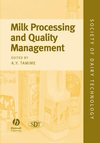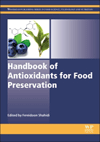We have all seen the front-of-pack designations that tout a food’s protein, calorie, sugar and/or fiber content. Front-of-package labels (FOPLs) are a tool to simplify nutrition information for consumers, but focusing on just a few nutrients may give consumers a skewed picture of “good foods” versus “bad foods.” This year’s virtual Institute of Food Technologists (IFT) conference (SHIFT20) was packed with useful information, including a session on FOPL.
The global landscape
Front-of-pack labeling is designed to help decrease morbidity and mortality from non-communicable diseases such as obesity and cardiovascular disease. But oversimplification can have unexpected consequences. For instance, plain Alaskan pollack might have a green light, encouraging consumption, while smoked salmon, because of its sodium content, might have an orange light indicating caution.
Claire Kruger, Ph.D., of Spherix Consulting Group gave an overview of various FOPL schemes around the globe. NUTRI-SCORE, a system widely used in Europe, grades foods from A (green/good) to E (dark orange/avoid). Other graphics include the Health Star Rating system used in Australia and New Zealand, and the Pan American Health Organization nutrient profile model used in Latin America.
Unintended consequences
Moises Torres-Gonzalez, Ph.D., of the National Dairy Council explained how dairy foods such as yogurt and cheese might receive less than favorable ratings. According to the NOVA classification system, plain yogurt might get a good rating, but not flavored yogurt, which is considered an ultraprocessed food because of the presence of artificial sweeteners, flavors or colors. However, the existing body of scientific evidence indicates that yogurt consumption is associated with lower risk of obesity and type 2 diabetes.
Similarly, cheese might receive a less favorable rating because of the presence of sodium and saturated fat, but cheese has actually been shown to be protective against the effects of sodium, and overall studies have shown that eating cheese is not associated with cardiovascular disease risk and may be associated with a lower risk for stroke and type 2 diabetes.
Labels simply do not tell the whole story of a food’s nutritional value. Roger Clemens, Ph.D., from the University of Southern California showed several ingredients declarations for foods that appeared to be “very chemical,” but turned out to be mangoes and kiwi fruit. Consumers should remember that FOPL systems in use today do not reflect the unique attributes of specific food matrices or the health effects of the whole food.






